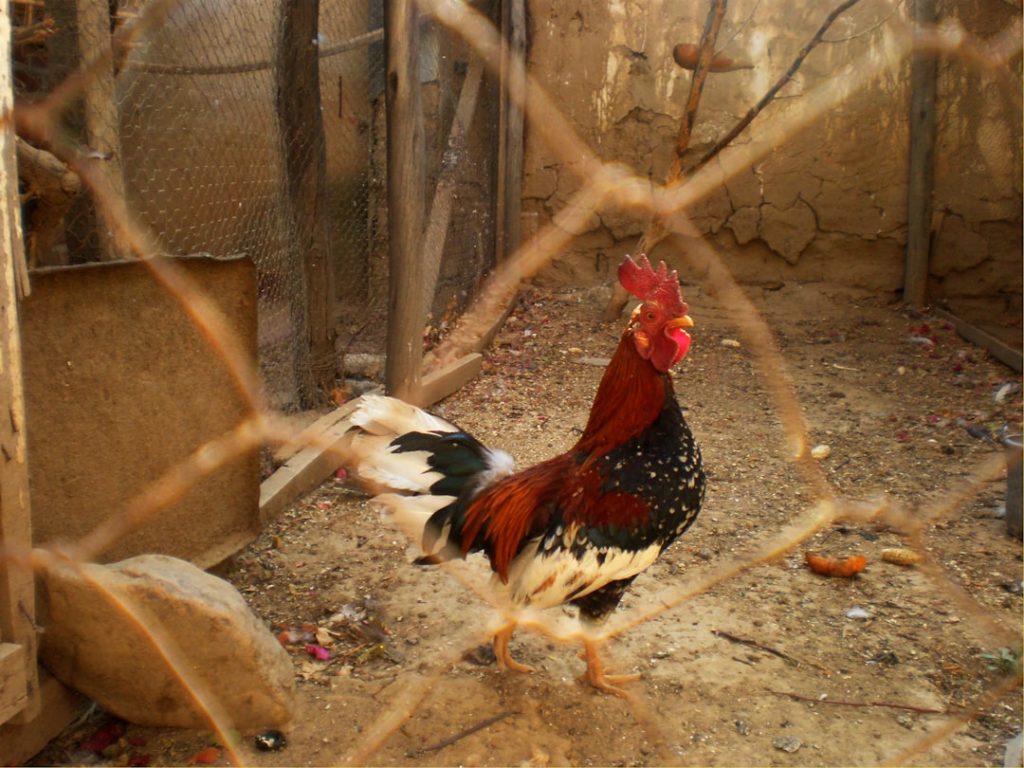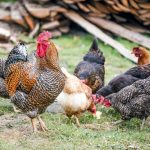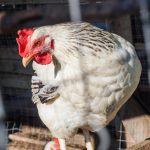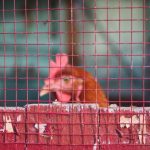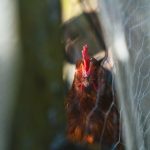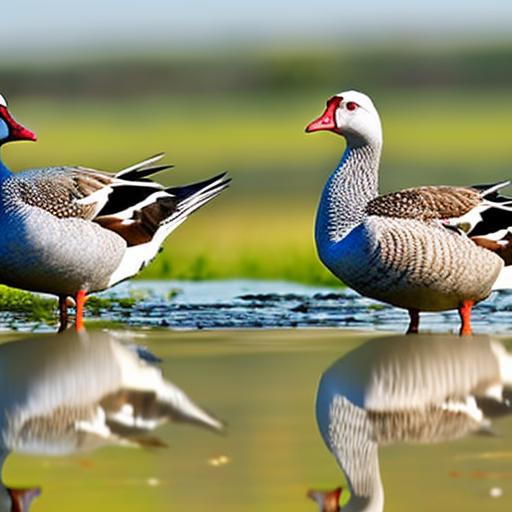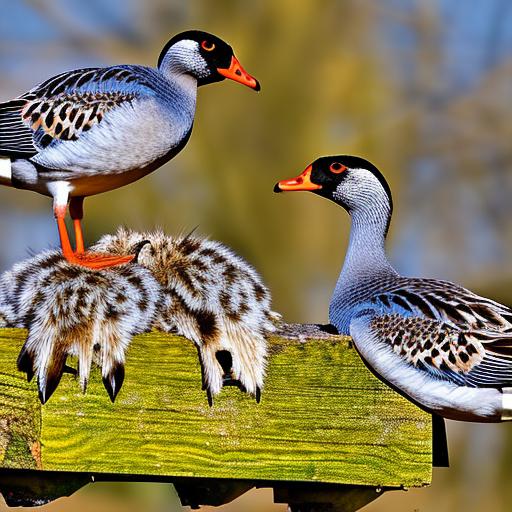Chickens are social creatures that thrive in flocks. They possess innate instincts to forage, dust bathe, and roost at night. Understanding these behaviors is essential for designing an appropriate and secure enclosure.
Chickens are naturally inquisitive but can be easily startled by sudden movements or loud noises. They can also exhibit territorial behavior and may become aggressive towards perceived threats, including other animals or humans. Providing adequate space for chickens to move and express their natural behaviors is crucial.
It’s important to note that chickens are capable flyers and may attempt to escape from inadequately secured enclosures. Their ability to fly should be considered when designing their living space. Within a flock, chickens establish a hierarchical social structure known as a pecking order.
Dominant individuals assert authority over subordinate ones. This behavior is particularly important to consider when introducing new chickens to an existing flock, as it can lead to aggression if not properly managed. Chickens have a strong exploratory drive, which can motivate them to seek out new food sources or investigate their surroundings.
This curiosity may lead to escape attempts if their enclosure is not sufficiently secure. A thorough understanding of chicken behavior and instincts is fundamental to creating a safe, appropriate, and engaging environment for these birds.
Table of Contents
- 1 Creating a secure and appropriate pen for chickens
- 2 Clipping the wings of chickens
- 3 Providing entertainment and enrichment for chickens
- 4 Using netting or fencing to prevent chickens from flying out
- 5 Training chickens to stay within their pen
- 6 Regularly checking and maintaining the pen to prevent escape
- 7 FAQs
Key Takeaways
- Chickens are social animals and exhibit natural behaviors such as scratching, dust bathing, and roosting.
- A secure pen with proper ventilation, protection from predators, and adequate space is essential for the well-being of chickens.
- Clipping the wings of chickens can prevent them from flying over fences and escaping.
- Providing entertainment and enrichment such as perches, dust baths, and hanging treats can keep chickens stimulated and reduce the likelihood of escape attempts.
- Using netting or fencing with proper height and strength can effectively prevent chickens from flying out of their pen.
Creating a secure and appropriate pen for chickens
Designing the Pen
When creating a pen for chickens, it’s essential to consider their natural behaviors and instincts. The pen should provide enough space for the chickens to move around, forage for food, dust bathe, and roost at night. It should also be secure enough to prevent predators from getting in and chickens from getting out.
Security Features
The pen should be constructed with sturdy materials such as wire mesh or wood to prevent predators from breaking in. It should also have a secure roof to prevent predators from attacking the chickens from above. Additionally, the pen should have a secure door that can be locked at night to prevent predators from getting in and chickens from getting out.
Providing Enrichment and Comfort
The pen should also have appropriate roosting areas for the chickens to perch on at night. This will not only provide them with a comfortable place to sleep but will also keep them safe from ground predators. The pen should also have areas for the chickens to dust bathe, as this is a natural behavior that helps them keep their feathers clean and free from parasites. Providing appropriate enrichment such as perches, dust bathing areas, and hiding spots will help keep the chickens entertained and reduce the likelihood of them trying to escape.
Clipping the wings of chickens
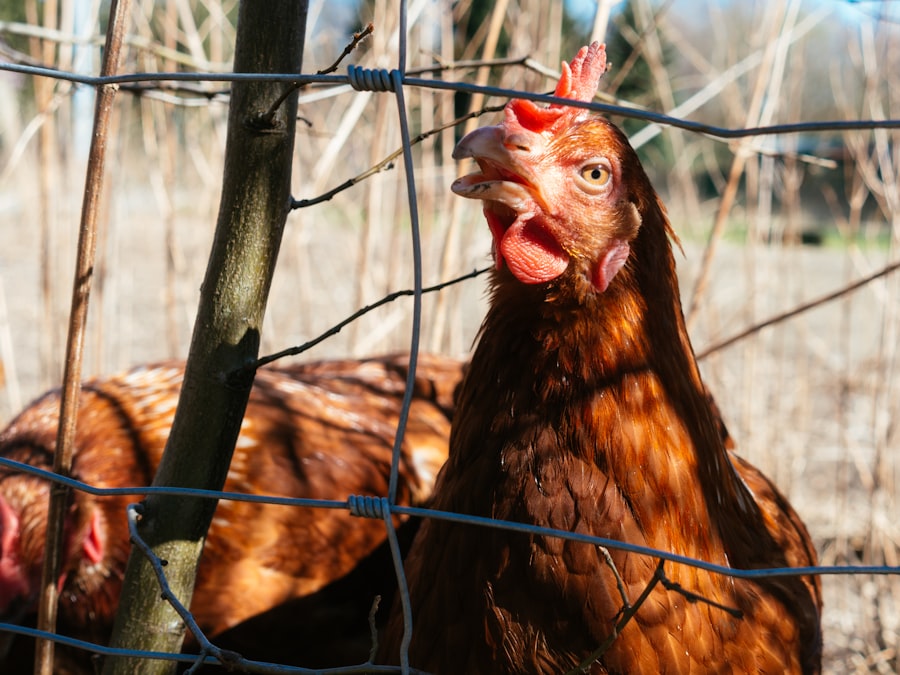
Clipping the wings of chickens is a common practice used to prevent them from flying out of their pen. This involves trimming the primary feathers on one wing to make it unbalanced and prevent the chicken from achieving lift when trying to fly. It’s important to note that wing clipping should only be done by someone who is experienced and knowledgeable about the process, as it can cause pain and discomfort if not done correctly.
When clipping the wings, it’s important to use sharp scissors and only trim the primary feathers, being careful not to cut into the blood feathers which can cause bleeding and pain for the chicken. Clipping the wings of chickens should be done in a way that is humane and does not cause unnecessary stress or discomfort for the birds. It’s important to only clip one wing to maintain balance and prevent injury to the chicken.
Additionally, wing clipping should be done in a way that allows the chicken to glide safely to the ground if they do attempt to fly, rather than causing them to crash or injure themselves. It’s also important to regularly check the clipped feathers for regrowth, as they will need to be trimmed again as new feathers grow in. Clipping the wings of chickens can be an effective way to prevent them from flying out of their pen, but it should be done with care and consideration for the well-being of the birds.
Providing entertainment and enrichment for chickens
Providing entertainment and enrichment for chickens is essential in keeping them happy and preventing them from trying to escape from their pen. Chickens are intelligent animals that require mental stimulation and physical activity to thrive. Providing them with toys such as hanging mirrors, pecking blocks, or treat dispensers can help keep them entertained and engaged.
Additionally, providing them with perches, dust bathing areas, and hiding spots can help keep them active and engaged in their environment. Chickens also enjoy foraging for food, so providing them with opportunities to search for treats or scatter feed around their pen can help keep them entertained and mentally stimulated. Additionally, introducing new objects or rearranging their environment from time to time can help prevent boredom and keep them engaged in their surroundings.
Providing entertainment and enrichment for chickens is essential in preventing them from trying to escape from their pen and ensuring that they lead happy and fulfilling lives.
Using netting or fencing to prevent chickens from flying out
Using netting or fencing is an effective way to prevent chickens from flying out of their pen. Netting can be used to cover the top of the pen, preventing chickens from flying over the fence and escaping. It’s important to use strong and durable netting that can withstand the weight of the chickens if they attempt to land on it.
Additionally, fencing can be used around the perimeter of the pen to prevent chickens from flying over the top or squeezing through gaps in the fence. When using netting or fencing, it’s important to regularly check for any damage or wear and tear that could compromise its effectiveness. Repairing any holes or weak spots in the netting or fencing will help ensure that the pen remains secure and prevents chickens from escaping.
Using netting or fencing is an effective way to prevent chickens from flying out of their pen, but it’s important to use high-quality materials and regularly maintain them to ensure their effectiveness.
Training chickens to stay within their pen
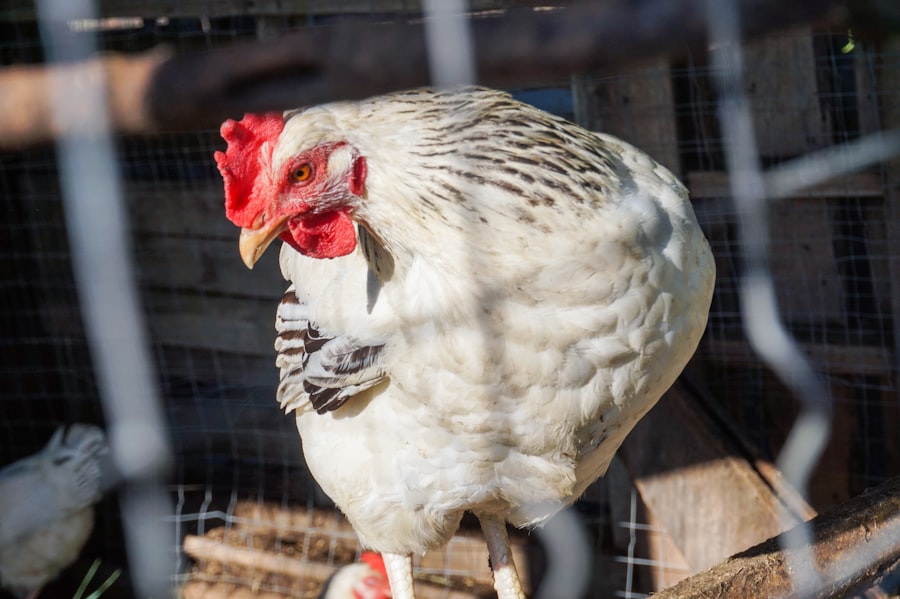
Reinforcing Good Behavior
Using verbal cues or signals when the chickens attempt to leave their pen can help them understand where they are allowed to go. Consistency is key when training chickens, so it’s essential to reinforce this behavior regularly until it becomes a habit for them.
Providing a Stimulating Environment
It’s also crucial to provide enough space and enrichment within the pen to keep the chickens entertained and engaged. Boredom can lead chickens to try and escape from their pen in search of new stimuli, so providing them with toys, perches, dust bathing areas, and hiding spots can help keep them happy and content within their designated area.
Achieving Success with Patience and Consistency
Training chickens to stay within their pen requires patience, consistency, and positive reinforcement, but it can be achieved with time and effort. By following these tips and being consistent in your approach, you can successfully train your chickens to stay within their pen.
Regularly checking and maintaining the pen to prevent escape
Regularly checking and maintaining the pen is essential in preventing escape attempts by chickens. This involves inspecting the perimeter fencing or netting for any damage or wear and tear that could compromise its effectiveness. Repairing any holes or weak spots in the fencing or netting will help ensure that the pen remains secure and prevents chickens from escaping.
Additionally, checking the door for any signs of damage or wear will help ensure that it remains secure at all times. It’s also important to regularly check for any potential escape routes that chickens could exploit, such as gaps in the fencing or areas where they could dig under the perimeter. Addressing these potential escape routes promptly will help prevent escape attempts by the chickens.
Regularly checking and maintaining the pen is essential in preventing escape attempts by chickens and ensuring that they remain safe and secure within their designated area.
If you’re looking for tips on how to keep chickens from flying out of their pen, you might also be interested in learning about how many eggs geese lay. Check out this article to find out more about geese breeding and egg production.
FAQs
What are some methods to keep chickens from flying out of their pen?
Some methods to keep chickens from flying out of their pen include clipping their flight feathers, using netting or wire over the top of the pen, and providing enough space and enrichment within the pen to discourage flight.
Is it safe to clip a chicken’s flight feathers?
Yes, it is safe to clip a chicken’s flight feathers if done properly. It is a painless procedure that involves trimming the primary feathers on one wing to prevent the chicken from achieving lift when attempting to fly.
What type of netting or wire is best for covering a chicken pen?
The best type of netting or wire for covering a chicken pen is one that is strong and durable, such as hardware cloth or poultry netting. It should be securely fastened to the top of the pen to prevent chickens from escaping.
How much space should be provided in a chicken pen to discourage flight?
A general rule of thumb is to provide at least 10 square feet of space per chicken in the pen. Additionally, providing plenty of enrichment such as perches, dust baths, and hiding spots can help discourage chickens from attempting to fly out of the pen.
Meet Walter, the feathered-friend fanatic of Florida! Nestled in the sunshine state, Walter struts through life with his feathered companions, clucking his way to happiness. With a coop that’s fancier than a five-star hotel, he’s the Don Juan of the chicken world. When he’s not teaching his hens to do the cha-cha, you’ll find him in a heated debate with his prized rooster, Sir Clucks-a-Lot. Walter’s poultry passion is no yolk; he’s the sunny-side-up guy you never knew you needed in your flock of friends!

